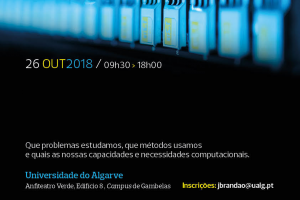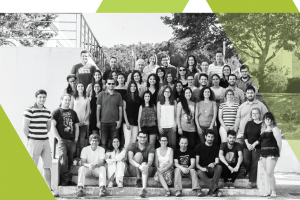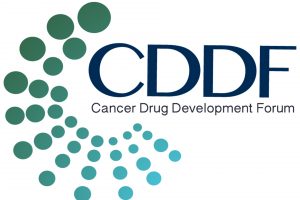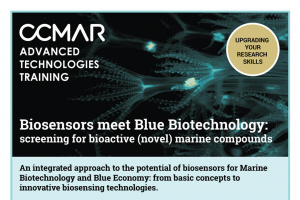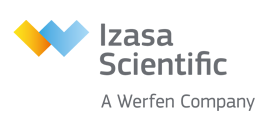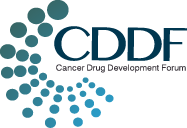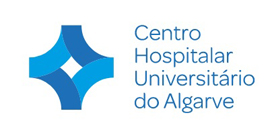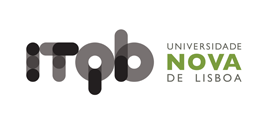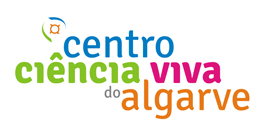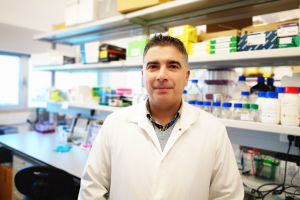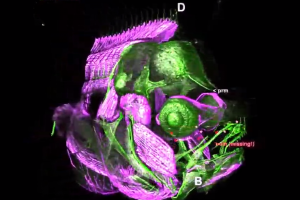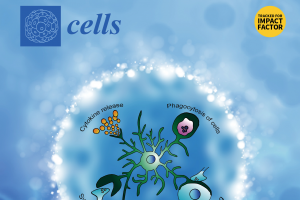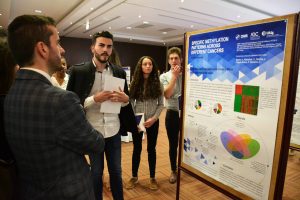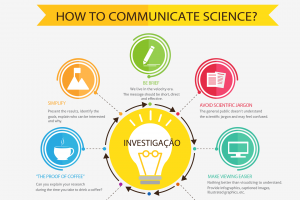“What is a guy like you doing in a place like this?” Simply put, that’s what we were curious to find about american scientist John Krakauer, from Johns Hopkins University. Since 2014, has been spending at least a month each year working closely with the neuroscience teams at the Champalimaud Centre for the Unknown.
At age 50, John Krakauer – director of the Brain, Learning, Animation, and Movement Lab (BLAM for short) at the Department of Neurology of Johns Hopkins University in Baltimore – says he still feels like “uma criança”. And he says it in Portuguese because… he actually spent his childhood in Portugal and grew to love it.
Krakauer considers himself “a stroke person” and, as a neurologist, he’s been working with patients in post-stroke motor rehabilitation for many years. But he is also a neuroscientist, who wants to put his unconventional ideas about motor rehab therapy to the test in animal models and in controlled human trials.
For this latter project, he has recruited and collaborated with game developers, artists, roboticists – and even had the help of a dolphin specialist – to create an immersive gaming experience. This could one day allow stroke patients to recover their motor skills to the maximum of their potential – a goal which, according to Krakauer, current therapeutical approaches are far from being able to achieve.
During his latest stay as visiting scholar at the Champalimaud Centre for the Unknown (CCU), he told us about the passion he puts into his work (medical and scientific), his love and admiration for the people he works with (on both sides of the Atlantic), his love affair with the city of Lisbon, and the pleasure he takes in spending part of his time every year in this “otherworldly” institute devoted to neuroscience known as the CCU.
What is your main focus of research?
I’m interested in the control of movement and learning of motor skills in the setting of both health and disease. Not only in movement for itself, but also because I think it’s a very good experimental system for understanding cognition in general.
This is because, given that the motor system has quantifiable output, you can actually measure it, whereas thought is not as easy to measure. And at the same time, a movement is the result of a thought, so with movement you have a way to indirectly measure cognition.
You question the way stroke patients’ physical rehab is done today. Why? And what should be done otherwise to really make it work?
Here’s the problem: there’s been a lot of pessimism about damage to the nervous system. And what people basically decided over decades is to simply have stroke patients learn how to function as well as they can with what they have left.
So the conventional idea is that, whatever capacity they have left, patients should more than anything else be able to go to the bathroom again, get out of bed, move across a room… And this is very good, because we’re trying to get people to cope with their new state.
Except that none of these rehab treatments seem to reverse the nature of the damage, that is, to allow people to go back towards more normal movements. They’re just teaching them to compensate for their loss, as we call it – which requires very well trained therapists, don’t get me wrong.
But we also know that in the first months after a stroke people tend to do a lot of recovery on their own. Just like when you have a cut and it heals by itself without you doing anything to make it get better.
That means the brain too seems to have an endogenous capacity to repair itself after it’s injured. So we wondered: what if there is a way to amplify, to take advantage of, to interact with this spontaneous healing capacity? And back in 2008, what me and my team at Columbia discovered is a kind of rule for this endogenous process.
What rule is that?
Well, it looks as if there’s quite a stable correlation between the initial degree of impairment and how much a stroke patient will have recovered three months later.
We call it the “proportional recovery” rule and, specifically, it means that in those three months, the patient gets back about 70% of their maximal potential recovery, which we can calculate based on initial impairment.
Think for a second about the implications: not only does it tell us there’s a rule-driven process of spontaneous biological recovery, but also that we’re not altering that relationship by an effective treatment in between.
SWIMMING WITH DOLPHINS
To put your ideas to the test, you co-developped a video game for arm rehab. How does it work?
The number of task-specific repetitions patients make in an average rehab therapy session is about 30, which is is pathetically low. We know, from work in non-human animal systems, that you need to be in the hundreds of repetitions, at least, to show any changes in the brain.
We wanted the patients to do 3000 repetitions, not 30. But if I said to a patient “I want you to reach for that cup 500 times”, it would be just too boring. So this wasn’t the way to do it.
Another problem was that, in rehab, the idea is to just practice task by task. But there’s not enough time in a day to do each task a thousand times.
We needed to have a way to have patients make lots of movements, enjoy making them, and have the movements be useful for the tasks of everyday life even if though they weren’t a task themselves.
Sounds a bit contradictory.
Right. That’s why we decided to create a game, something immersive and beautiful, motivating and playful, exploratory, non boring, high-dosage and high-intensity, that would make patients literally cover miles of arm movements. And we made the patients become a dolphin swimming in the ocean.
Their arm basically becomes the intention of the dolphin, called Bandit, and the patients are enjoying it so much that they don’t realize that they’ve done miles of movements with their arm that we hope will be useful to the tasks of everyday life.
But isn’t it difficult for the patients to move their arm?
That’s right – and we are in fact trying to target people with moderate to severe impairment. But other work we do suggests that weakness and control are not the same thing. If you take the patients after a stroke and remove some of the strength requirements they need for moving their arm, then you see that they are actually quite dextrous.
So what we did was we customised an exoskeleton robot to make it purely anti-gravity. Most robots provide assistance along the direction of the movement; we didn’t want that. We just wanted it to remove gravity so the patient could then provide her own impetus to move.
So the patients “swim” with the dolphin?
In fact, they are the dolphin – they control Bandit’s intention as he swims. The dolphin has dynamics that play out when you give it your intention by moving your arm. Just like when I intend to grab a bottle, all sorts of physics happens in my arm that I don’t even understand.
We wanted to reproduce that situation in the way the dolphin was controlled. It would have all the physics details, but they would play out if the arm was aimed it in the right direction, which is what we do with our arm while we move. So what our team made is not a drawing of a dolphin, it’s a physics simulation.
All this stemmed from an improbable collaboration with game developers, a dolphin specialist and an artist. How did you manage to find these people?
I got to Johns Hopkins in late 2010 and around the spring of 2011, I went to the Hopkins campus to find gamers. There was a guy who was teaching gaming at Hopkins, and through him I met Omar [Ahmad] and Promit [Roy]. For me, they were just these two kids really, and I thought that they’d been dumped on me because the guy who was in charge of the course wasn’t really interested in my project.
They agreed to come to visit the lab and decided to join us. They had been working on movement, but I had no idea that these two people – and I mean this – were genuinely brilliant. And they had this unbelievable technical capacity, and also artistic inclinations. I get a little bit terrified when I tell the story because the chances were just so low to meet people like this.
And then it took us years to actually develop the dolphin simulation. And what was unbelievably valuable is that we got extraordinary feedback from thousands of healthy people playing a game that was available on the iOS App Store, called “I am Dolphin” [which was later “revamped” into another iOS app called “Shark Eaters – Rise of the Dolphins”]
It is important to stress, though, that the game the patients play is distinct from the commercial game and that we are making no therapeutic claims for the latter. But the feedback and attention we got from the app gave us valuable insights into how to create a motivating game using the dolphin for the patients. I don’t think this has ever been done before.
(Read more: A Very Special Team)
PART-TIME JOB AT CHAMPALIMAUD RESEARCH
Why did you decide to work “part-time”, so to speak, at the Champalimaud Foundation Neuroscience Lab?
Well, it really was because of Rui Costa [director of Champalimaud Research]. I knew about him before I met him at Janelia Research Campus, in Virginia. We both were invited speakers and Rui discovered that I’d lived in Portugal, and said to me that I should come and spend some time at Champalimaud. So it was a bit like the plot of a romantic comedy.
I hadn’t been back to Portugal for 13 years. My father had died in 2001 here in Lisbon, and I had lost interest. Rui thought this was ridiculous, and he gave me this position of visiting scholar in 2014. And that’s how I came back, planning to write my book on stroke here.
But I wasn’t expecting the existential homecoming shock. To be honest, it was much more psychologically unnerving than I expected it to be. Not because my father had died here; it was more the fact that I couldn’t believe I had not come back to this unbelievable city for 13 years. I was angry at myself.
But did you also like being back?
I was ecstatic, and I was sad, and I was ecstatic. I was speaking Portuguese again. And I had family here, my step-mother lived down in the Algarve and Eric, my little brother from my father’s second marriage, would come every year. And I started to love the place and the students and the international feel of Champalimaud, and Lisbon.
I would have heated discussions with Rui until four in the morning fighting over science. So I think Lisbon’s was a gift to me and also the deepening of a scientific relationship with Rui and then with Zach [Mainen, director of Champalimaud Research]. The truth is that Rui and Zach are unusual neuroscientists, both of them extremely thoughtful, intellectual people.
What do you do at the CCU?
I started by teaching in the computational course [the CAJAL Advanced Course in Computational Neuroscience], I interacted a lot with the students here – they would show me their work, I became a kind of a person to come over and talk to. And now I also have an ongoing project with Noam [Shemesh, principal investigator of the Neuroplasticity and Neural Activity lab]. Unbelievably, we’re in a position now to do full-brain non-invasive imaging and ask fundamental questions about why that second stroke makes mice them better again.
So Rui actually gave me this gift. And he was like the best friend I always wanted, he is such a lovely person. So Rui, and the Champalimaud, and neuroscience, and Portugal, and I think, ach! – it’s too much. [laughs]
A TRAVELING FAMILY
You lived part of your childhood in Albufeira. How did you land there?
When my mother, who is British, was 16 or 17 and living in London, her mother died and it was heartbreaking for her. And when she got to around 20, 21 years old, she’d saved up some money and she went to live in Africa. She just had to get out and she took a job there. After that she moved to Mexico, and then to Texas. She was kind of adventurous.
My father fled Berlin in 1938 when he was 13 or 14 and moved to New York. Later, he joined the Air Force. My mother was in her 20’s when she moved to Texas many decades later. She started going to night classes at the University in Texas while she was a secretary during the day. She was a fast typer! My father happened to be based there at the time and they met.
I was born in Illinois, on an Air Force base, and right after that we moved to Hawaii. My brother David was born in Hawaii, and then my father met somebody else. So my mother took us and came back to Europe. Her father had a summer house in the Algarve, and my mother ended up finding a place in Albufeira.
How old were you?
I was four (it was around 1969, 1970). We stayed in Albufeira about a decade. My mother grew to like it, learned the language. Very soon after we arrived, my father came to Portugal to try and make peace with my mother. And he never left; he was here till he died, in 2001.
But by 1979, my mother had married somebody else, so my brother David and I moved back to England with her. We went to school in London, and then I went to Cambridge. And after that, I moved to New York for medical school.
So you’re fluent in Portuguese?
I was. Portuguese was my first language. I learned to read and write in Portuguese. I would speak English at home, but I had to have English lessons. Now these visits to Portugal have completely increased my fluency again.
Portugal was a very poor country in the late sixties, early seventies…
There was nothing! Only animals and fields and little hedgehogs [laughs]. We had cats and dogs, I adopted ducks. We literally brought up animals. It’s funny, because I’m the most urban creature you could possibly imagine, and yet I grew up in the countryside with animals, in a very poor country.
I went to the International School, but my parents insisted we go on the Portuguese “side”. And we were never kept away from other social classes. Our best friends were the children of fishermen and farmers.
My mother told me when I was very young there are two things you should never be: one is forreta, don’t be ungenerous, that’s a terrible trait. And two, don’t be a racist; I was in Africa, don’t ever be a racist. Don’t be these two things and I’ll always love you [laughs].
Source: http://magazine.ar.fchampalimaud.org/we-made-the-patients-become-a-dolphin-swimming-in-the-ocean/




